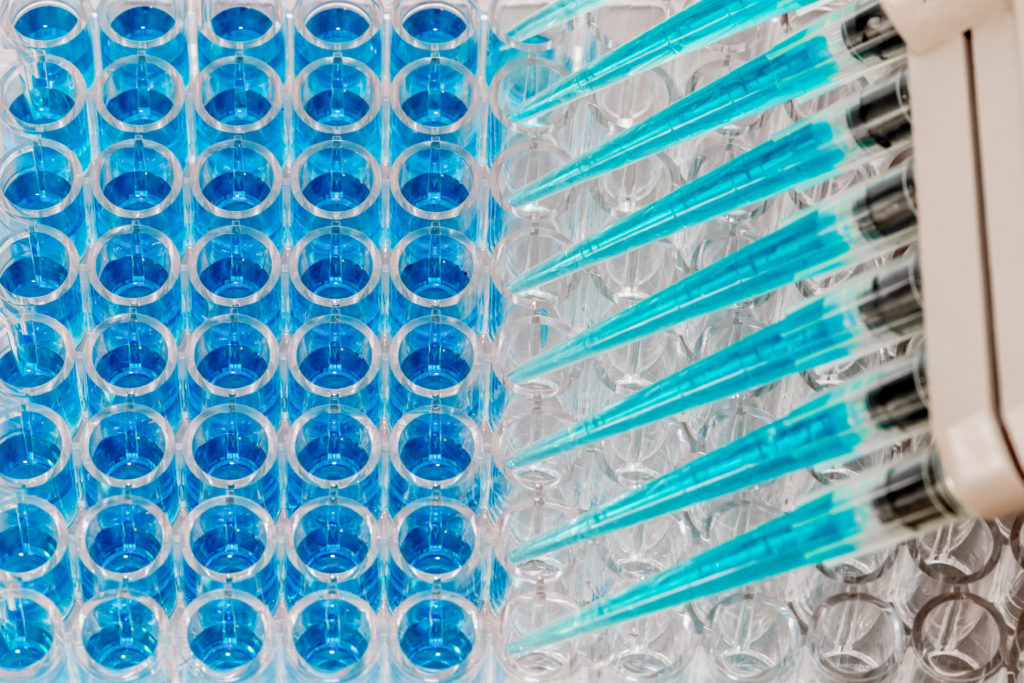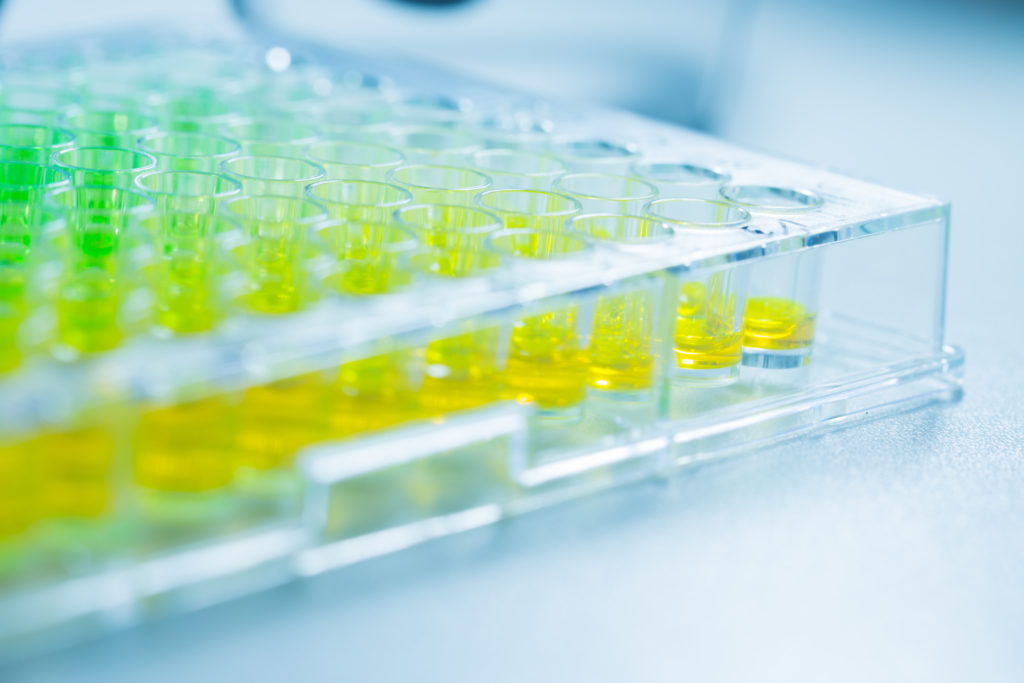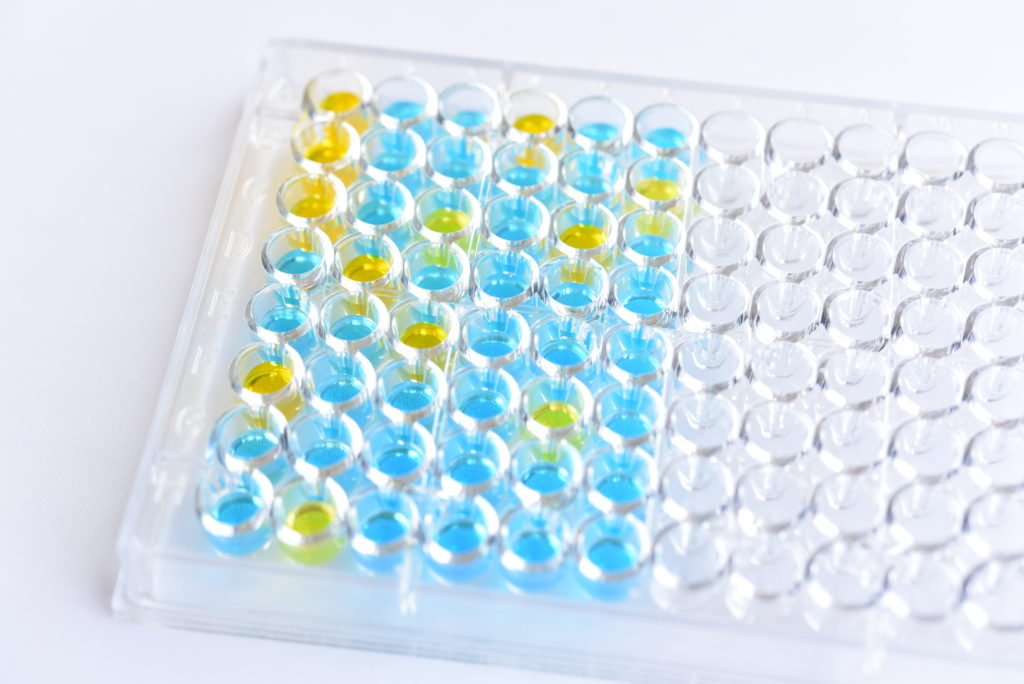
High throughput and multiparametric enzymatic tests
In vitro enzymatic assays quantify the activity of enzymes. For this, we use high throughput tests (many samples in a single experiment), where several parameters can be measured at the same time (saving time and increasing scientific confidence).
Specific enzymatic activities can be used as parameters to evaluate the efficacy or cytotoxicity of a product.

Evaluate cytotoxicity by enzymatic tests
For instance, lactate dehydrogenase (LDH) is an important enzyme that converts glucose into energy. It catalyzes the conversion of pyruvate to lactate in glycolysis and lactate to pyruvate in gluconeogenesis.
The LDH assay reflects cellular damage. It is a key factor to be measured in the evaluation of the toxicity of a product.

ELISA tests
Briefly, the ELISA test is an enzyme-based assay that visualizes an antigen-antibody reaction via a color reaction (enzyme-linked immunosorbent assays). It is also a quantitative test if a standard curve is included (for instance a BSA concentration range).
Enzymes are proteins capable of catalyzing reactions, i.e. they accelerate chemical reactions that are usually very slow. They play a major role in various cellular processes including the production of cellular energy. This is why there are various ELISA tests available to evaluate the impact of your molecules on cellular energy.
Applications
- Evaluate efficacy and cytotoxicity
- Detail the mechanism of action
- Obtain detailed scientific data
Advantages
- Fast, simple and accurate analysis
- Evaluate toxicity and efficacy at the same time
- Quantitative and qualitative analysis
